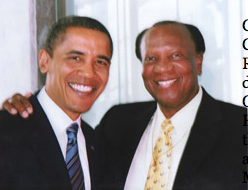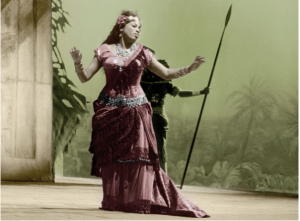Archives Alive
https://coggle.it/diagram/VgGSWt-ih3Zch7oR
George Vescey wrote the newspaper article, “Opera’s Answer to the Slam Dunk- Simon Estes gives 110% just as he did in Basketball,” in 1985. Vescey incorporated ethos, pathos, and logos into this piece in order to attract the attention of, and gain the trust of his readers.
In the 1980’s many Americans didn’t know who Simon Estes was. Many would’ve found the idea of a black man singing opera confusing at the very least, because according to Benjamin P. Bowser of the University of Santa Clara, “It was assumed by many social scientists that a decline in prejudice would be accompanied by a decrease in racial discrimination; a change in belief would result in a change in behavior. Despite declines in survey-reported racial prejudice and the elimination of legally sanctioned and overt discrimination, blacks apparently are still experiencing racially motivated restrictions.” Bowers goes on to say that at the beginning of the 1980’s, research shows that blacks are as confined as ever to segregated communities.
Vescey as well as Estes were aware of the racial prejudice present in the 1980’s, and therefore Vescey uses a commonplace in the title of his article to attract readers. The commonplace according to Heinrich is, a viewpoint that your audience holds in common, and is a good jumping-off point for your argument (Heinrich, 2014, 107). Vescey’s commonplace is a reference to the common stereotype about African Americans, that they are good at basketball. Utilizing this commonplace gives Vescey the power of logos, as well as ethos. His readers now see him as sharing their opinion. This builds his logos, and his ethos through decorum.
Richard Lowy author of, “Yuppie Racism: Race Relations in the 1980’s,” also paints the picture of racism in the 1980s. He believes that many Americans do not view racism as a major problem in contemporary society. Many believe that the civil rights activism of the 1960’s, education, and mass media have led to significant changes in race relations, and that any remnants of historical discrimination that currently exist are actually problems of class and stratification, and not race. Lowy feels that there was a resurgence of racism in the 1980’s, and this resurgence was shown by incidents involving racial prejudice nationwide, increases in racial violence, and attacks on affirmative action programs.
http://www.simonestesfoundation.org/biography.php
African American opera singers of the 1970’s and 1980’s were subject to de facto discrimination, discrimination done through by law, but caused by traditions and customs. Leontyne Prince, a soprano opera singer who was just starting to retire in the 1980’s was like Estes, one of the first of her kind. She shares a similar story to Estes in that she grew up in a time period ruled by Jim Crow laws. She came from a family that didn’t have much, and like Estes attended Julliard and found much success there. She later went on to sing at the Metropolitan Opera, although the magic of it was tainted by racism.
Vescey tells gives a short summary of the racism that Estes faced in his life, as well as little bit of information about his life. By telling about Estes’s life readers can better connect with him. In addition, using the argument tool of storytelling, which according to Heinrich is the best way to change an audience’s mood (Heinrichs, 2013, pg. 83), allows Vescey to get his audience to the mood he desires. He wants them to be attentive, trusting, and willing to be persuaded.
Prince rehearsing with Herbert von Karajan, 1960
http://www.simonestesfoundation.org/biography.php
As Aida in Franco Zeffirelli’s La Scala staging, 1963
http://www.simonestesfoundation.org/biography.php
Many people may have felt that racism was no longer an issue in the 1980’s because it’d been several years since the Civil Rights Act of 1964 was passed, however as I researched more on this time period racism was still alive in many communities across our country. Although segregation caused by racism was no longer written into our laws, it was still written on our minds. As a nation we still had a long way to go in changing our mindsets on racism. Simon Estes, a popular African American opera singer in the 1980’s, faced this racism in America. As a result he found most of his early success in Europe, and only in the later half of his career did he find the level of success that he found in Europe in America.
Vescey’s article ultimately only hints at the racism that Estes was experiencing in the 1980’s but didn’t elaborate on it, most likely so that white readers would not be turned away. In addition, the automatic ethos that come with writing for the New York Times, could be jeopardized if he talked to much about discrimination and not enough about Estes’s life and that he’s an amazing opera singer.
http://www.simonestesfoundation.org/biography.php
Sources:
Abramson, Ruby. “Westmoreland to Drop Libel Suit Against CBS: General, Network to Make Joint Announcement Today on Ending $120-Million Legal Action.” The New York Times, 18 February 1985. Web. 27 Sept. 2015. Retrieved from http://articles.latimes.com/1985-02-18/news/mn-3110_1_westmoreland-libel
Counts, George W. 1999. Online Encyclopedia of Significant People and Places in African American History. Retrieved from http://www.blackpast.org/aah/estes-simon-1938
Duffie, Bruce. April 1983. Bass- Baritone Simon Estes: A Conversation with Bruce Duffie. Wagner News. Retrieved from http://www.bruceduffie.com/estes.html
Ferrone, Paul. 2015. Simon Estes Biography. Simon Estes Foundation. Retrieved from http://www.simonestesfoundation.org/biography.php
“News and Events of 1985.” Infoplease. Sandbox Networks Inc., n.d. Web. 27 September 2015.
- Retrieved from http://www.infoplease.com/year/1985.html
Vescey, George. (31 May 1985). “Opera’s Answer to the Slam Dunk.” Quad City Times. Retrieved from http://diyhistory.lib.uiowa.edu/transcribe/4193/120138



